Hong Kong’s harnessing of solar and wind power lags far behind the International Energy Agency recommendations. A new Climate Action Plan will be released in the third quarter of 2021. Chai Hua reports from Shenzhen.
The climate change effects from global warming are not just a theory anymore. The devastating July floods across Germany, Austria and Belgium cut off entire districts and blocked emergency aid from reaching communities. Two hundred deaths were recorded with more expected after the flood waters recede.
In Henan province, China, the flooding from unusually heavy rainfall this month trapped an underground train, burst riverbanks, damaged dams, and submerged homes, displacing almost 1.5 million people. The Indian Nanda Devi glacier broke off in the Himalayas last week, smashing the Dhauliganga river valley below, destroying two hydro power plants, and leaving 125 people missing.
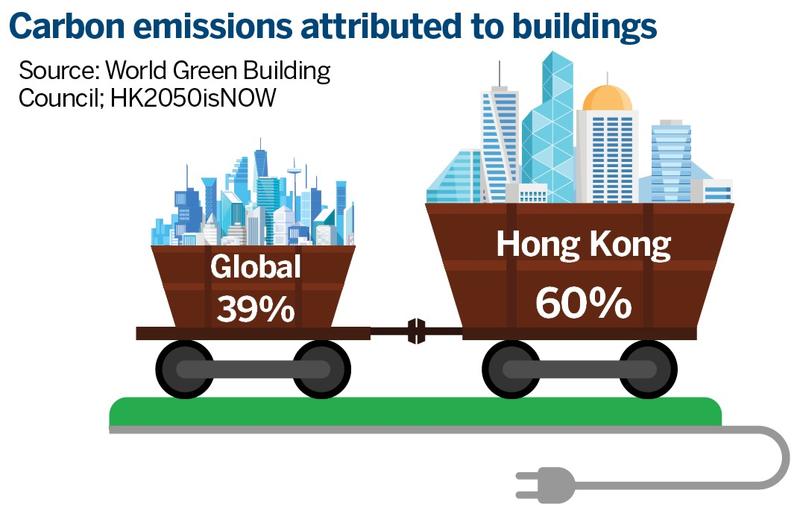
Global warming will continue to melt mountain snow caps and the polar ice, causing extreme weather across the planet. These calamities will become more regular, and more furious. Corrective action by all countries is urgently required for the safety of the planet and all life on it. Are we already too late?
The International Energy Agency in May released its Net Zero by 2050: A Roadmap for the Global Energy Sector. It says a net-zero pathway requires annual additions of solar photovoltaic cells to reach 630 gigawatts by 2030 and of wind power to reach 390 GWs, quadrupling the level in 2020 and accounting for almost 70 percent of electricity generation globally.

Hong Kong’s harnessing of solar and wind lags far behind the IEA suggestions. Wong Kam-sing, secretary for the environment, told a local newspaper that the Environment Bureau plans to raise the renewable energy targets, including expanding the installation of PV panels on reservoirs. A new Climate Action Plan will be released in the third quarter of 2021.
The Water Supplies Department of Hong Kong installed two small systems of 100 kilowatts each on Shek Pik Reservoir and Plover Cove Reservoir in 2017. The government says it is “not easy to estimate” solar energy by 2030 till pilot projects and public reaction are factored in. Of the clean energy target of 25 percent by 2030, almost all will be nuclear energy electricity purchased from the Chinese mainland since 1994. Solar is nominally expected at 1 to 1.5 percent by 2030.
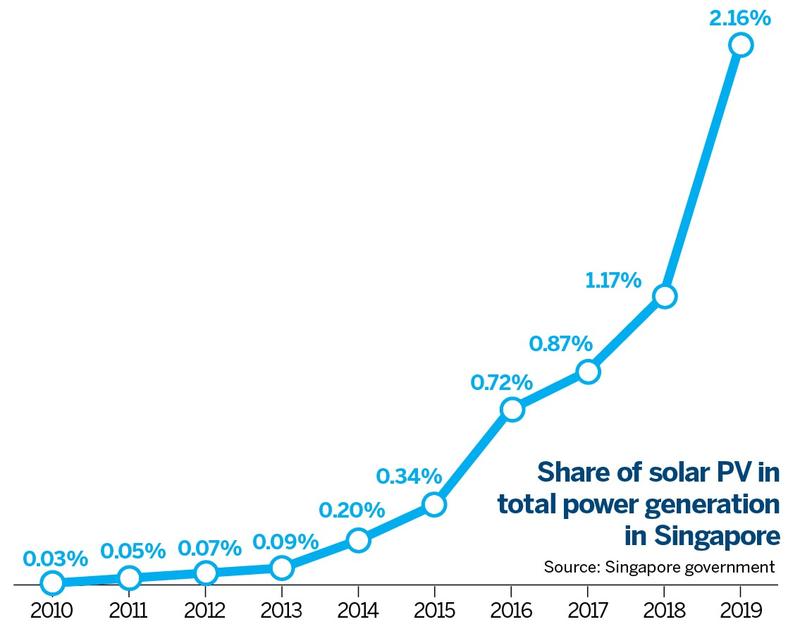
Singapore bets on solar
Singapore is betting big on clean energy, especially solar energy. Though solar power contributes only 2 percent of its electricity power currently, Singapore’s goal is to quadruple solar energy deployment by 2025, including the rooftops of public housing blocks. By 2030, it aims to deploy at least 2 GW-peak of solar which can power around 350,000 households — five times that of today.
The Solar Energy Research Institute of Singapore expects, in an accelerated deployment scenario, to fast-track solar power to contribute 28 percent of its peak power demand by 2030 and 43 percent by 2050.
Under its SolarNova project in 2014, private companies can bid to finance, install and operate solar PV systems on participating buildings. In return, they can set up long-term power sales agreement with users at a rate lower than the retail electricity tariff. By March, solar capacity of 330 megawatt-peak was generated for 6,901 Housing and Development Board blocks, sufficient for 82,500 4-room flats. Carbon dioxide emissions were cut by 198k tons per annum.
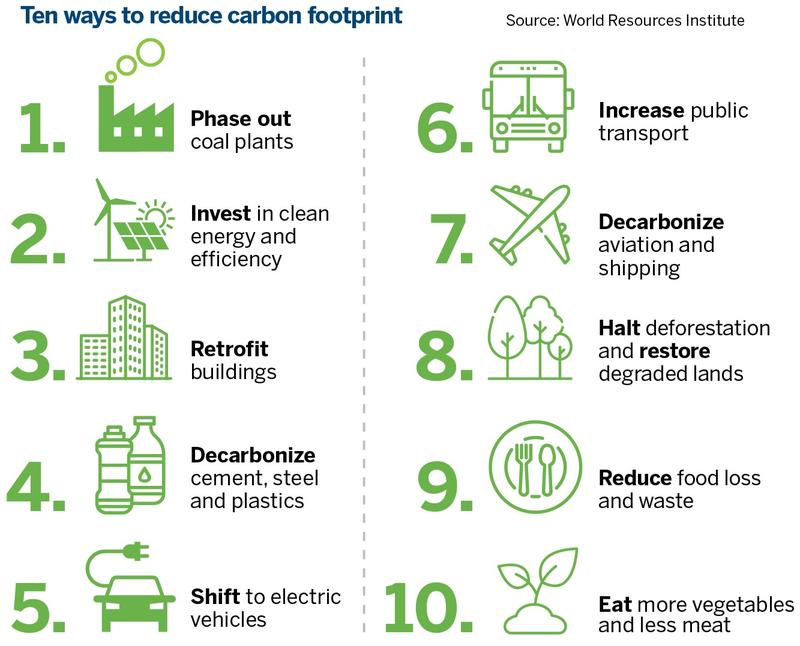
In mid-July, the city unveiled a 60 MW-peak solar PV farm on a reservoir — one of the world’s largest floating solar panel farms. More than 13,000 panels on an area equivalent to 45 football fields can produce enough electricity to power the island’s five water treatment plants.
Sembcorp Industries, a Singapore-based conglomerate, is also exploring innovative building materials and technology to better incorporate individual solar PV panels into low, zero, and even positive energy buildings.
In China, the mainland authorities hope to achieve 20 percent electricity supply from non-fossil fuel sources by 2020 and 50 percent by 2050.
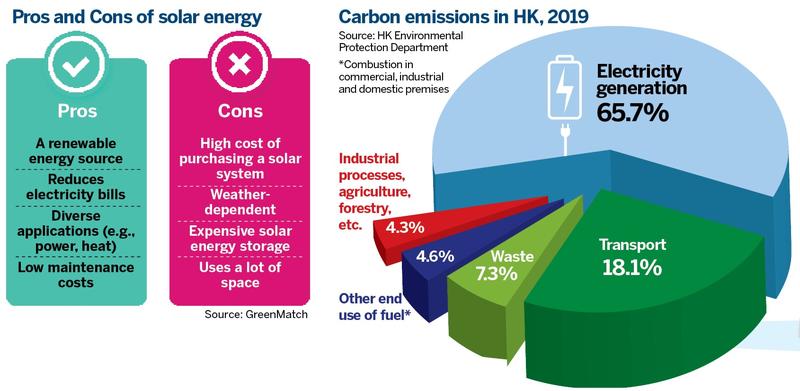
HKUST solar scheme
The Hong Kong University of Science and Technology is installing 8,000 solar panels at over 50 locations on campus. It expects 3 million units (kWh) of electricity per annum, equivalent to the annual consumption of 900 3-member households.
“We now have over 30 locations with the solar panels installed and are hoping to wrap up all by fall,” Davis Bookhart, head of the Sustainability Unit and adjunct assistant professor of the Division of Environment and Sustainability at HKUST, told China Daily.
Based on this experience, he said the ratio of renewable energy in Hong Kong’s total electricity mix could be expanded. “Renewables are more challenging in Hong Kong because of the vertical orientation of buildings, but there are creative ways to incorporate renewables into existing and new locations,” he said, citing locations for shade such as driveways, parking lots, walkways, swimming pools, and south-facing windows.
Bookhart attributed the hesitancy of commercial property owners to a lack of familiarity. “Some commercial installers offer to finance the entire installation in exchange for a share of the revenue,” he said.

In 2018, the government released its Renewable Energy Feed-in Tariff Scheme for private consumers to install facilities and sell the power generated to power companies at a rate higher than the normal electricity tariff. So far, 13,000 applications for the FiT system have been received, of which 90 percent have been approved for completion this year.
In Hong Kong, the FiT rates range from HK$3 to HK$5 (39 to 64 cents) per kWh. The normal residential tariff is HK$1.2. The HKUST solar project is expected to yield HK$4 million annual profit after capital recovery.
“The FiT is quite generous and allows for a very attractive investment return,” said Bookhart. He suggested the government provide longer certainty to the FiT scheme and a guaranteed time period, like 13 years, for each new project. Bookhart calls for additional incentives for difficult installations. He hopes for expanded eligibility for FiT to use biomass, algae, tidal or wave power, mini-hydro, and other new creative solutions.
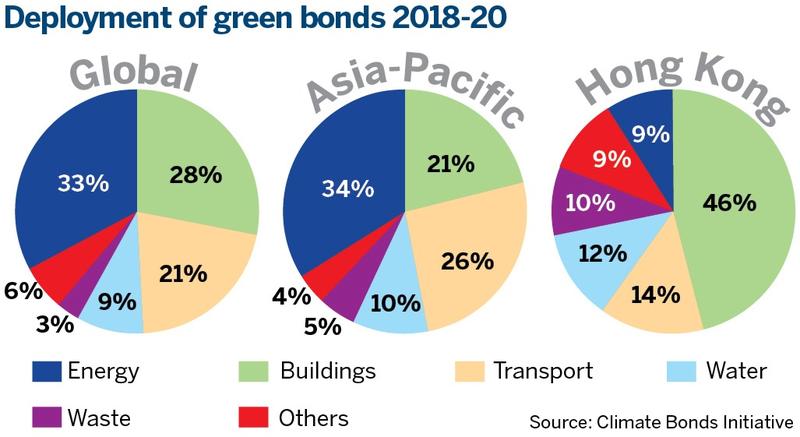
Power stability
Power grid stability is a known strength of Hong Kong. Enlarging the proportion of new energy from wind, solar, and hydro may compromise that reliability. Predicting peak loads and matching them with a wider range of fluctuating energy sources will be a challenge.
A power system with a high proportion of new energy will find traditional operational management cannot cope with the random, fluctuating, and intermittent energy flows and demand spikes, said Qiu Haifeng, manager of the Innovation and Digitalization Department at China Southern Power Grid’s Shenzhen Power Supply.
The firm is piloting a digital power grid in Shenzhen, integrating big data and high-performance computing techniques to build digital technology platforms at the cloud and terminal ends.
Sammie Leung, a partner at PwC, observed a momentum for enterprises to explore ways to participate in achieving zero net carbon emission goals in multiple industries across Hong Kong, the mainland, and other Asian regions.
“With Hong Kong as a financial center, we have a broad range of green finance products to enable the green transition in the private sector, because relying on the government alone to solve the problem would not be realistic,” she said.
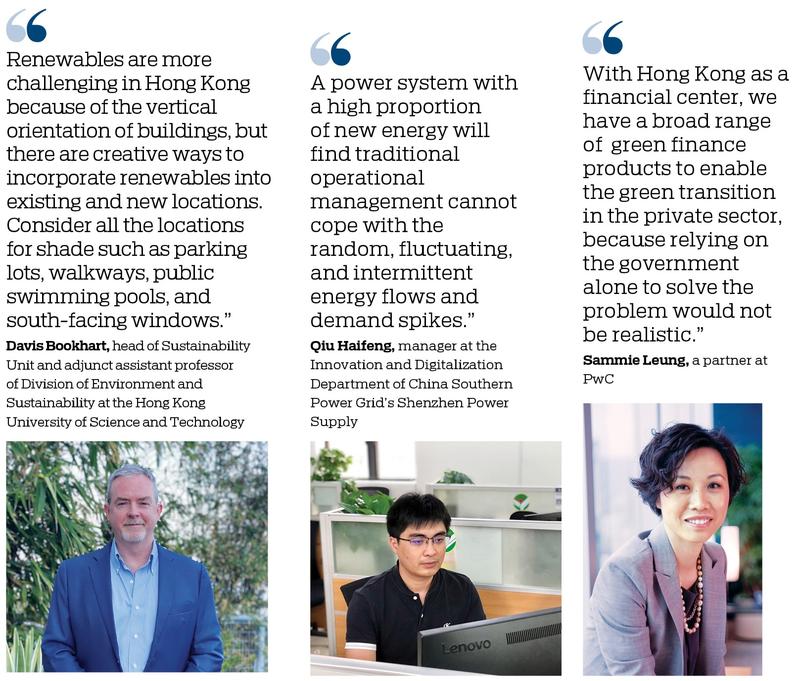
The government’s Green Tech Fund of HK$200 million closed the first round of applications in February. The amount of funding for each project ranges from HK$2.5 million to HK$30 million.
The special administrative region also issued green bonds totaling HK$66 billion for five years from 2020. As of June 30, 2020, about HK$7.8 billion had been allocated to seven public projects.
One of the projects is the government office towers at the West Kowloon Reclamation area, where a solar PV system was installed to convert solar radiation into usable electricity.
The Standard Chartered study on carbon dioxide transition by 2025 suggests that Hong Kong exports worth US$205 billion will be at risk as multinationals exit “dirty industries”. The city exported US$503.5 billion in 2020.
Contact the writer at grace@chinadailyhk.com


